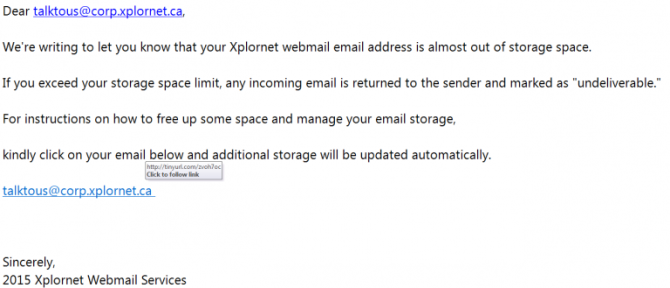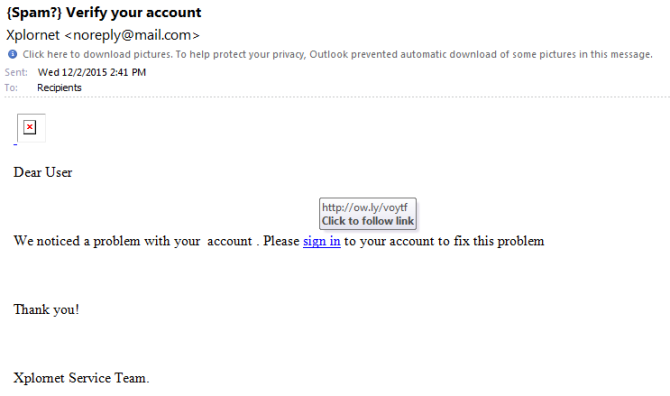Prevent email phishing with these online anti-spam tips


In September 2022 Xplornet became Xplore. Read more here.
Phishing is a scheme used by cyber criminals to gather your personal information such as online passwords, social insurance number, banking information, credit cards and much more to make money at your expense. As identified by the RCMP in this helpful email fraud and phishing FAQ emails are often disguised by fraudsters as a business you typically deal with. They can gather your information through deceptive emails and websites which can be highly sophisticated and look like a legitimate email or link.
Despite being one of the oldest forms of online crime, phishing is still highly pervasive in modern times. According to Verizon’s 2019 Data Breach Investigation Report, 32% of all cyber attacks involved some form of phishing. With that being said, let’s explore ways in which you can identify and protect yourself from all kinds of email fraud.
Tips for Avoiding Email Phishing
Check the Email Domain
Any legitimate brand or institution contacting you via email will likely have their own unique domain name. If you are receiving emails from a public domain name, such as gmail.com or hotmail.com, chances are it is a fraudulent email and should be reported to Xplornet. If the domain name seems legitimate, read it over carefully for unusual abbreviations, symbols and errors. Another tip is to check through your bank statements and other paperwork to find the company in question’s correct email address and domain name, and compare it to the one messaging you. If you find any discrepancies, do not open the email. On mobile phones, often only the display name is shown in an inbox. Be sure to check the address the email is being sent from prior to opening.
Review Before Clicking Links
Many phishing scams are performed by getting you to click on a link to a malicious website that could potentially be collecting your data, or by opening malware (such as viruses) onto your computer. It is important that before clicking on any links, you hover your mouse over the link to look at the full link in its entirety. Many times the link is shortened to hide its fraudulent directory. If something looks suspicious at all, do not click on it.
Read for Spelling Mistakes
A great deal of phishing emails have spelling mistakes and grammatical errors. Companies and institutions sending you emails are typically done in a formal matter and will have been rigorously proofread before they were sent out. Many believe cyber criminals leave mistakes so that they can prey on the most gullible victims. If there are mistakes, be wary.
Don’t Believe Urgent Calls to Action
Oftentimes, a fraudulent email will contain aggressive language to scare you into doing what the scammers want. This includes emails stating your account has been suspended, an urgent payment is needed, or this is your final notice. Any email that has a sense of urgency behind it should be back-checked by contacting the company directly through a number you are certain is legitimate, or by searching for it independently online. Do not contact the company using the information provided in the email.
Always Be Sceptical
Phishing con-artists have had lots of time to perfect their schemes. Logos, email addresses, and the language used in these plots may seem authentic. Always remain skeptical of all emails to ensure that you do not fall victim to a scam.
Ongoing Protection from Phishing
Always use up-to-date security and antivirus software on your device and ensure you are scanning for malware at frequent intervals.
Use multi-factor authentication on your devices such as a thumbprint scan and unique, sentence-long passwords.
Avoid having your email address visible on social media accounts and other sites.
Check your personal and financial accounts regularly for any unauthorized or suspicious activity.
Keep your data backed-up to an external hard drive, not connected to the internet, at all times.
If you’ve received a phishing email, we encourage you to report it to us at [email protected], and to the RCMP through their Canadian Anti-Fraud Centre. Use your up-to-date security software to run a scan for malware. Below are some examples of phishing attempts sent to our customers.





